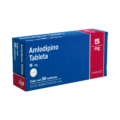In Canada, the Pharmaceutical Drugs Directorate (PDD) applies the Food and Drug Regulations under the authority of the Food and Drugs Act to ensure that the pharmaceutical drugs offered for sale in Canada are safe, effective, and of high quality. The PDD also administers fee regulations for drugs under the authority of the Financial Administration Act.
Drugs are authorized for sale in Canada once they have successfully gone through the drug review process. This process is the means by which a drug application is reviewed by scientists in the Health Products and Food Branch (HPFB) of Health Canada, and on occasion, by outside experts, to assess the safety, efficacy, and quality of a drug.
Throughout the process, the safety and well-being of Canadians are the paramount concern. Once a drug is on the market, regulatory controls continue. The distributor of the drug must report any new information received concerning serious side effects including failure of the drug to produce the desired effect. The distributor must also notify HPFB about any studies that have provided new safety information and request approval for any major changes to the manufacturing processes, dose regime, or recommended uses for the drug.
HPFB conducts market surveillance, monitors adverse reaction reports, investigates complaints and problem reports, and manages recalls, should the necessity arise.
What is Amlodipine?
Amlodipine belongs to a class of medications known as calcium channel blockers. It lowers blood pressure by relaxing the blood vessels so the heart does not have to pump as hard. It controls chest pain by increasing the supply of blood to the heart. If taken regularly, amlodipine controls chest pain, but it does not stop chest pain once it starts.
Amlodipine is used alone or in combination with other medications to treat high blood pressure in adults and children 6 years and older. It is also used to treat certain types of angina (chest pain) and coronary artery disease (narrowing of the blood vessels that supply blood to the heart). Amlodipine was patented in 1982 and approved for medical use in 1990. It is on the World Health Organization’s List of Essential Medicines. It is available as a generic medication. In 2018, it was the fifth most commonly prescribed medication in the United States, with more than 75 million prescriptions.
Why is amlodipine banned in Canada?
No, amlodipine is not banned in Canada. Although a study found that women who took calcium-channel blockers (CCBs) like amlodipine (Norvasc), for 10 years or longer had more than double the odds of having certain forms of breast cancer, including the most common type, invasive ductal breast cancer, another large population study provided strong evidence that CCB use is not associated with an increased risk of cancer. These studies with conflicting outcomes have been a source of concern for most public health and regulatory bodies across the globe.
Despite these concerns, amlodipine is not on the list of banned drugs in Canada. You can buy amlodipine with a valid prescription in Canada and border health authorities will allow you to enter Canada with the medication required for a single course of treatment or a 90-day supply, whichever is less, of both prescription drugs and over-the-counter medication.
Amlodipine Safety Information
If you are between the ages of 18 and 60, take no other medication, or have no other medical conditions, side effects you are more likely to experience include:
-
- Edema (swelling around the ankles) is the main side effect. Shortness of breath, dizziness, fast or irregular heartbeat, flushing, and wheezing have also been reported.
- Lower doses may be needed in patients with liver disease. When starting treatment in those already on antihypertensive treatment, use a lower starting dose of 2.5 mg/day.
- Rarely, excessively low blood pressure may be experienced by some people. The risk is higher for people with severe aortic stenosis. Blood pressure should be monitored regularly.
- Rarely, some patients may experience an increase in the frequency or severity of angina or acute myocardial infarction (heart attack) when starting amlodipine. The risk is greater in those with severe obstructive coronary artery disease.
- May interact with a number of other drugs including those that inhibit hepatic enzymes CYP3A and other drugs that also lower blood pressure.
Note: In general, seniors or children, people with certain medical conditions (such as liver or kidney problems, heart disease, diabetes, seizures), or people who take other medications are more at risk of developing a wider range of side effects.
Warnings for people with certain health conditions
For people with liver problems: Amlodipine is processed by your liver. If your liver isn’t working well, more of this drug may stay in your body longer. This puts you at risk for more side effects. If you have severe liver problems, your doctor may lower your dosage.
For people with heart problems: If you have heart problems, such as narrowing of your arteries, this drug may increase your risk of health problems. You may have low blood pressure, worsening chest pain, a heart attack after starting treatment with this drug or increasing your dosage. If you have these symptoms, call your doctor or go to the emergency room right away.
Warnings for other groups
For pregnant women: Research in animals has shown negative effects on the fetus when the mother takes amlodipine. However, there haven’t been enough studies done on humans to be certain how the drug might affect a human pregnancy.
Tell your doctor if you’re pregnant or plan to become pregnant. Amlodipine should be used during pregnancy only if the potential benefit justifies the potential risk.
For women who are breastfeeding: Some research has shown that amlodipine passes into breast milk. However, it’s not known if amlodipine can cause side effects in a child who is breastfed. Talk to your doctor if you breastfeed your child. You may need to decide whether to stop breastfeeding or stop taking this medication.
This article first Appeared On Meds Safety Read The Original Article Here





